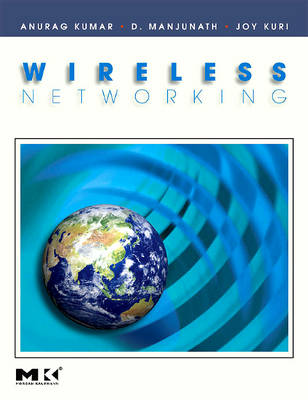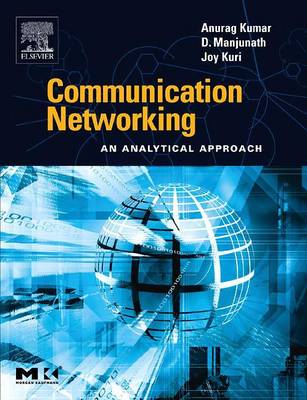The Morgan Kaufmann Series in Networking
2 total works
Over the past decade, the world has witnessed an explosion in the development and deployment of new wireless network technologies. From cellular mobile telephony to the ubiquitous "WiFi" networks in coffee-shops and airports, to the emerging WiMAX wireless broadband access networks, the menu of wireless access systems has become so comprehensive that wireline access to user devices may soon become a relic of the past. Wireless Networking serves as a one-stop view of cellular, WiFi, and WiMAX networks, as well as the emerging wireless ad hoc and sensor networks. Rather than provide descriptive accounts of these technologies and standards, the book emphasizes conceptual perspectives on the modeling, analysis, design and optimization of such networks. Furthermore, the authors present wireless networking within the unifying framework of resource allocation, using simple abstractions of the underlying physical wireless communication. In short, Wireless Networking is an in-depth, exhaustive, and invaluable asset to anyone working in this rapidly evolving field.
Communication Networking is a comprehensive, effectively organized introduction to the realities of communication network engineering. Written for both the workplace and the classroom, this book lays the foundation and provides the answers required for building an efficient, state-of-the-art network-one that can expand to meet growing demand and evolve to capitalize on coming technological advances. It focuses on the three building blocks out of which a communication network is constructed: multiplexing, switching, and routing. The discussions are based on the viewpoint that communication networking is about efficient resource sharing.
The progression is natural: the book begins with individual physical links and proceeds to their combination in a network. The approach is analytical: discussion is driven by mathematical analyses of and solutions to specific engineering problems. Fundamental concepts are explained in detail and design issues are placed in context through real world examples from current technologies. The text offers in-depth coverage of many current topics, including network calculus with deterministically-constrained traffic; congestion control for elastic traffic; packet switch queuing; switching architectures; virtual path routing; and routing for quality of service. It also includes more than 200 hands-on exercises and class-tested problems, dozens of schematic figures, a review of key mathematical concepts, and a glossary.
This book will be of interest to networking professionals whose work is primarily architecture definition and implementation, i.e., network engineers and designers at telecom companies, industrial research labs, etc. It will also appeal to final year undergrad and first year graduate students in EE, CE, and CS programs.
The progression is natural: the book begins with individual physical links and proceeds to their combination in a network. The approach is analytical: discussion is driven by mathematical analyses of and solutions to specific engineering problems. Fundamental concepts are explained in detail and design issues are placed in context through real world examples from current technologies. The text offers in-depth coverage of many current topics, including network calculus with deterministically-constrained traffic; congestion control for elastic traffic; packet switch queuing; switching architectures; virtual path routing; and routing for quality of service. It also includes more than 200 hands-on exercises and class-tested problems, dozens of schematic figures, a review of key mathematical concepts, and a glossary.
This book will be of interest to networking professionals whose work is primarily architecture definition and implementation, i.e., network engineers and designers at telecom companies, industrial research labs, etc. It will also appeal to final year undergrad and first year graduate students in EE, CE, and CS programs.

